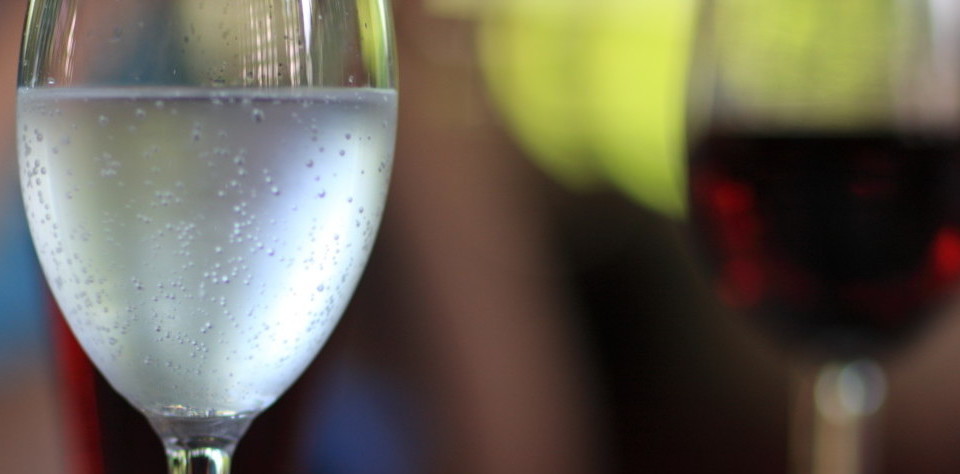Fine Waters, the book written and documented by Michael Mascha, reveals us some of the secrets held by water sommeliers. Yes, there are also water sommeliers who can recommend you a specific type of water depending on food, temperature, time of the day, occasion. etc, just like a wine sommelier. In fact, Michael Mascha used to be a renowned wine sommelier whose doctor ordered him to stop drinking alcohol, and this is why he switched to an area totally harmless, quite even beneficial for health.
Shall we add ice or not?
Rather not. Ice is one of the drinks enemies, especially in the case of mineral water. Unfortunately in Romania there are only a handful of bars where mineral water ice is served. Preferably water is served at room temperature, cold or with ice made with the same type of water. For example, in Bucharest there is a bar where AQUA Carpatica also becomes ice in order not to alter the taste of water or cocktails: Flair Angel.
Special glasses
Long gone the time when water glasses were the most ordinary on the table or even worse they were the same wine glasses. We have a whole collection on Pinterest suggesting ideas for ideally drinking water with style.
Storage
The sommeliers recommend water be stored in dark and cool places, such as wine cellars, at around 12-13 degrees, that is also the perfect serving temperature for most still waters. We also recommend that water stored in any type of recipient should be kept away from sunlight or toxic substances.
Clarifying
If the mineral water is bottled, there is no need for clarifying. It is microbiologically pure, clear and has no substance to settle.
Serving temperature
In order to really feel the differences between the tastes of mineral waters, sommeliers recommend various temperatures for mineral water, depending on the carbonation degree. For example, still water is ideally served at 12 degrees, light sparkling water at 13-14 degrees, medium sparkling water (such as AQUA Carpatica carbo) at 14-15 degrees, and Forte sparkling water at 17 degrees.
Lemon?
Yes, if you do not want to feel the taste of water, in particular. As a matter of fact, lukewarm or room temperature water helps digestion.
Water sommeliers also offer information on pairing still or sparkling mineral water with food.
Pairing of tastes
One of the best ways to pair water with food is having several types of water during the meal. Pairing the type of water with each course or time of the meal will be subtle and refined, the difference adding more pleasure to each bite.
For a five-course meal, the alternation is the following:
Starter: Sparkling mineral water, with big bold bubbles
Salad: Effervescent – a nice contrast with the first attempt and the dressing acidity
First course (something light, for example, fish, seafood etc): Still – you will notice the absence of bubbles in the water and you will focus on the taste.
Second course (for example – chicken): Effervescent, slightly sparkling. Reintroducing bubbles and pairing with the course texture
Main course (red meat, filling): Light or classic sparkling, helps with the digestion of the main course
Desert: Still or light sparkling
When serving water it is important to keep in mind the complementarity and the contrast. Sometimes, the contrast enriches the food texture or taste. For example, the shell texture pairs well with still water, but the bubbles of light sparkling water could bring additional sensations. The same rule also applies to other types of food such as seafood, sushi or fish.
The 75% rule: Up to 75%, the gustatory sensation should match the water mineralisation or carbonation: the gustatory sensation given by water should be as strong as the one of the dish. Too strong, too bold bubbles could hide the taste of food, and still water could not contrast well enough with crispy dishes that would go better with sparkling water.
The 20% rule: The dominant ingredients in a dish may ”require” different levels of minerals. Low TDS (mineralisation) waters give a light and fresh sensation, but high TDS waters give fullness to the water. High levels of salt, bicarbonate or, on the contrary, their absence can change the taste and perception of the water taste. For example, cheese pairs well with water rich in bicarbonate, and the desserts with low-calcium and low-magnesium but silicon-rich waters which gives them the delicacy that suits desserts so well.
The 5% rule: In the end, a fine pairing is that of alkalinity and acidity. A neutral PH goes well with any type of food. Slightly alkaline water can give a sweetish taste, and a high alkalinity can even give a bitter or unpleasant taste. Acid water requires balance in fatty foods and vice versa.
In Romania, AQUA Carpatica was the sommeliers’ choice in the National Mineral Water Contest 2014.
Taguri: aqua carpatica fine waters sommelier water


Niciun comentariu